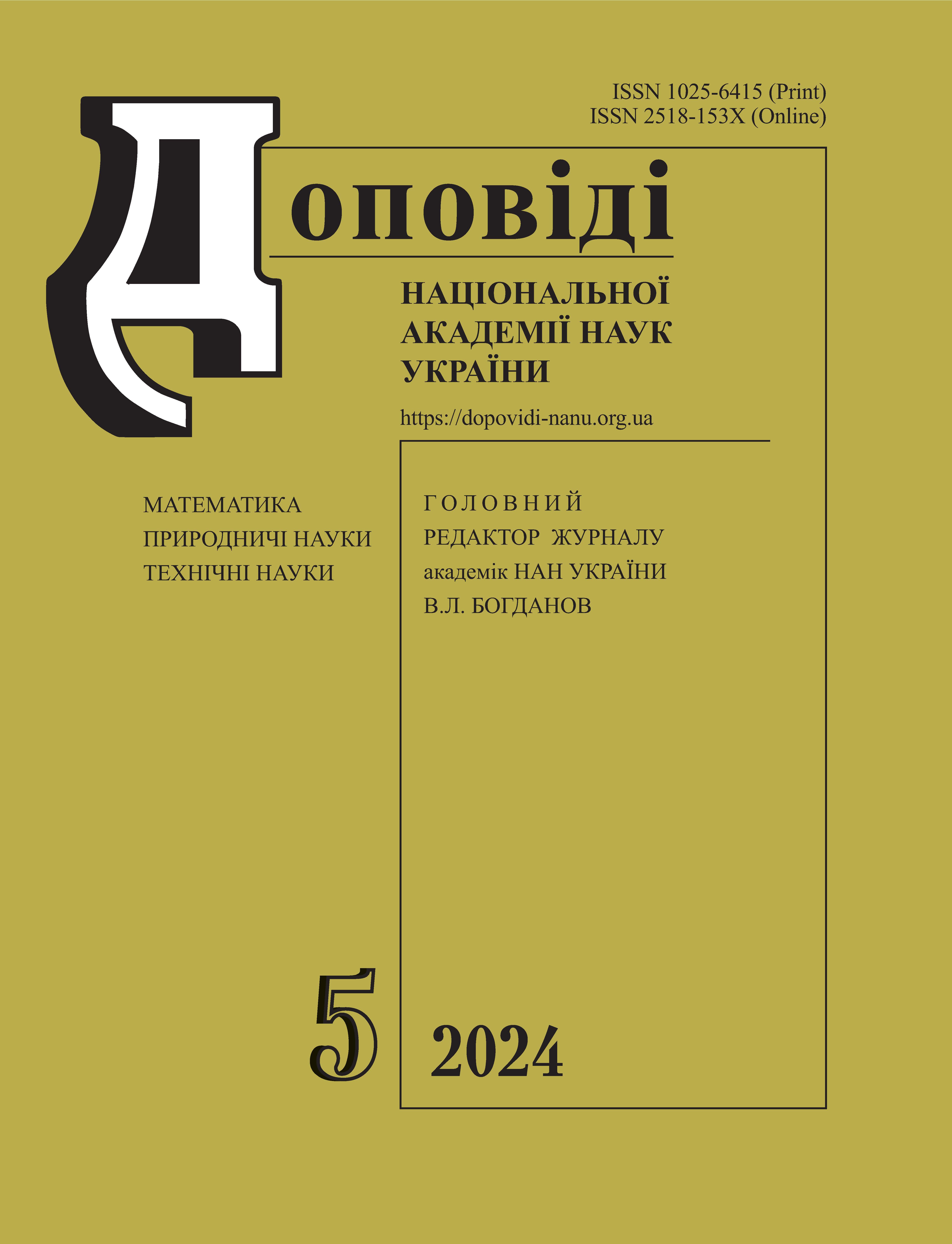Дослідження впливу параметрів тріщиностійкості на критичне навантаження зразка з тріщиною нормального відриву при триточковому згині в рамках когезійної моделі
DOI:
https://doi.org/10.15407/dopovidi2024.05.053Ключові слова:
тіло з крайовою тріщиною I типу, когезійна модель, триточковий згин, стан граничної рівновагиАнотація
В статті для аналізу процесу руйнування зразка з крайовою тріщиною I типу за умов триточкового згину використано когезійну модель зони передруйнування біля вершини тріщини. При цьому застосовано внутрішню модель з трапецоїдальним законом зчеплення–відриву в когезійній зоні. У скінченно-елементному дослідженні контактна взаємодія врахована штрафним методом. Проаналізовано вплив на критичне навантаження параметрів когезійної зони, таких як когезійна міцність і параметри форми. Продемонстровано як зі збільшенням когезійної міцності прогноз щодо критичного навантаження, отриманий в рамках нелінійної механіки руйнування, наближається до прогнозу, отриманого в рамках лінійної механіки руйнування.
Завантаження
Посилання
Gdoutos, E. E. (2020). Fracture Mechanics: An Introduction. Cham: Springer. https://doi.org/10.1007/978-3- 030-35098-7
Guz, A. N., Bogdanov, V. L. & Nazarenko, V. M. (2020). Preliminary consideration: background, approaches and their analysis. In: Guz A.N., Bogdanov V.L., Nazarenko V.M. Fracture of materials under compression along cracks. – Advanced Structured Materials, Vol. 138. Cham: Springer, pp. 1-59. https://doi.org/10.1007/978-3-030- 51814-1_1
Dahi Taleghani, A., Gonzalez-Chavez, M., Yu, H. & Asala, H. (2018). Numerical simulation of hydraulic fracture propagation in naturally fractured formations using the cohesive zone model. J. Pet. Sci. Eng., 165, pp. 42-57. https://doi.org/10.1016/j.petrol.2018.01.063
Kellner, L. Lu, W., Ehlers, S. & Høyland, K. V. (2021). Study on the cohesive edge crack in a square plate with the cohesive element method. Int. J. Fract., 231, pp. 21-41. https://doi.org/10.1007/s10704-021-00560-9
Alfano, F., Furgiuele, F., Leonardi, A., Maletta, C. & Paulino, G. H. (2007). Cohesive zone modeling of mode I fracture in an adhesive-bonded joint. Key Eng. Mater., 348–349, pp. 13-16.
Ruiz, G. (2001). Propagation of a cohesive crack crossing a reinforcement layer. Int. J. Fract., 111, pp. 265-282. https://doi.org/10.4028/www.scientific.net/KEM.348-349.13
Cherepanov, G. P. (1979). Mechanics of Brittle Fracture. New York: McGraw-Hill.
##submission.downloads##
Опубліковано
Як цитувати
Номер
Розділ
Ліцензія
Авторське право (c) 2024 Reports of the National Academy of Sciences of Ukraine

Ця робота ліцензується відповідно до Creative Commons Attribution-NonCommercial 4.0 International License.




